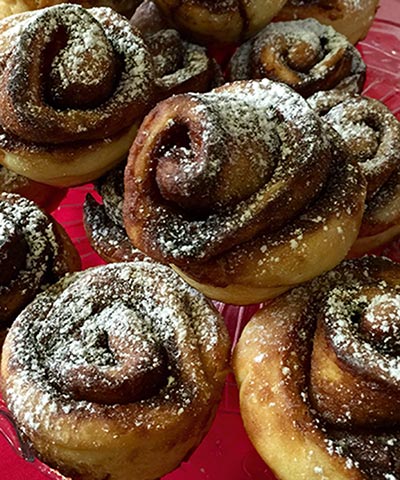Cinnamon in the air
 |
|
Cinnamon flavors the holiday season from decorative sweets to soul-warming mulled wine. [Photo provided to China Daily] |
Today the best cinnamon, with a light flavor usually reserved for delicate desserts and baking, is still claimed by Sri Lanka, which had a monopoly on "true" cinnamon for two centuries that was exploited by a succession of colonizers (Dutch, Portuguese and English) until it was smuggled out in the late 1700s and planted in India, Indonesia and elsewhere. The stronger-flavored cassia, meanwhile, is well-suited for candies, curries and rich foods.
"There isn't a single cuisine that doesn't use some form of cinnamon widely," notes the Canadian website Silk Road Spice Merchant. "It's also one of the world's oldest spices-it was traded as currency in ancient China."
While there is a Christmas carol that begins, "Chestnuts roasting on an open fire," the ruling aroma of the season is cinnamon. The sweet spice can turn up anywhere, in holiday pies from apple to pumpkin, in eggnog and hot wassail (a sibling of the mulled German gluhwein), and in Christmas cookies of every description. As you read this, your favorite coffee shop is poking cinnamon sticks into an assembly line of pumpkin lattes and gingerbread mochas.
At bakeries in China's big cities, you can follow your nose to bakeries churning out enticing cinnamon rolls. In the West, about half of the bakery offerings are smothered with gooey white icing, but in China-where sweet tooths are less developed, at least for now-we're usually spared such excess. Baker & Spice shops offer a particularly simple and delicious version in Shanghai and now in Beijing. So does the charity Crazy Bake, a catering operation in China's capital with a kitchen run by mentally impaired bakers who do a booming business for delivery in December.
All cinnamon loses its flavor quickly once ground, so home cooks are advised to buy frequently in smaller amounts.
















